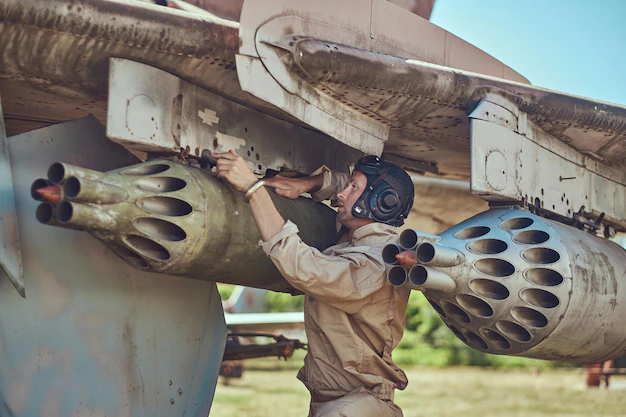Understanding the reason behind plane crashes

Air travel is widely regarded as one of the safest modes of transportation. A report by the International Air Transport Association (IATA) has consistently highlighted that the accident rate for commercial aircraft is at an incredibly low fraction compared to the number of flights. Despite this, plane crashes, though rare, do occur. Understanding the reasons behind these tragic incidents is vital for improving safety standards and preventing future accidents.
There are many different factors that can contribute to a plane crash, and it’s often a combination of these factors that leads to an accident. Here are some of the most common causes:
Human Error
Human error remains one of the leading causes of aviation accidents. Pilots, air traffic controllers, maintenance crews, and other personnel can all make critical mistakes. The complexity of aviation systems means that the impact of human error can be drastic. It’s not always a single error but often a chain of mistakes that contribute to an accident. For example, pilots may misunderstand instrument readings, make incorrect decisions under pressure, or fail to follow standard procedures during a critical phase of flight, like takeoff or landing.
Mechanical Failure

Even with strict maintenance procedures, mechanical failure remains a major cause of aircraft accidents. Millions of parts make up an aircraft, and even a single malfunction can have disastrous consequences. Mechanics problems that can lead to an accident include structural failures, landing gear problems, and engine problems. While manufacturing errors or design flaws may be to blame for the breakdown of modern aircraft, wear and tear on older aircraft over time increases the chance of failure.
Weather Conditions
Adverse weather conditions provide a significant risk to aircraft, accounting for over 13% of all incidents. Pilots may find it challenging to maintain control of their aircraft due to turbulence, strong winds, and icing.
Poor Communication
In every facet of aviation, communication that works is essential. Errors can result from poor or nonexistent communication within the ground crew, between the aircraft and air traffic control, or between the crew in the cockpit. Misunderstandings and inappropriate acts can arise from language hurdles, imprecise instructions, and the improper use of common phraseology.
Air Traffic Control Errors
Air traffic controllers are the unseen guides for every flight. Errors on their part, such as misjudging distance between aircraft, incorrect instructions, or failure to manage traffic congestion can have dire consequences. Modern air traffic control relies heavily on sophisticated radar and computer systems, but technology is not infallible, and human oversight is crucial.
Terrorism and Sabotage
Though significantly less common than other factors, acts of terrorism and sabotage can and have been the cause of plane crashes. Explosive devices, hijackings, and deliberate crashes have all occurred in the history of aviation, leading to the implementation of stringent security measures across the globe.
Pilot Disorientation
Spatial disorientation occurs when a pilot cannot correctly interpret the aircraft’s attitude, altitude, or airspeed, often leading to a loss of control. This can happen in poor visibility conditions when the horizon is obscured, or at night when visual cues are limited. Advanced training in instrument flight rules (IFR) is essential to prevent accidents related to disorientation.
It’s important to remember that these are just some of the most common causes of plane crashes. Each accident is unique, and there are many other factors that can play a role. The aviation industry is constantly working to improve safety, and plane crashes are becoming increasingly rare. However, it’s still important to be aware of the risks involved in flying.
The Role of Safety Agencies and Investigations
When a plane crash occurs, it is the responsibility of aviation safety agencies like the National Transportation Safety Board (NTSB) in the United States or the Air Accidents Investigation Branch (AAIB) in the UK to investigate. These organizations meticulously analyze flight data, maintenance records, pilot actions, weather conditions, and any other relevant information to determine the cause of the crash.
The purpose of these investigations is not to assign blame but to learn from the event and implement changes to prevent future accidents. Recommendations from safety agencies lead to improvements in aircraft design, pilot training, air traffic control procedures, and industry regulations, all aimed at making aviation safer.
Moving Forward: Safety as an Evolving Process
Safety in aviation is not static but a continually evolving process. Manufacturers are constantly innovating with more robust materials and testing methods. Airlines and flight academies continuously update training programs, emphasizing simulator training for emergency scenarios. Furthermore, there’s a growing emphasis on adopting a safety culture within all ranks of aviation personnel, recognizing that every stakeholder has a role to play in preventing accidents.
Regulatory bodies play a pivotal role in enforcing standards and monitoring compliance. Airworthiness directives, grounded fleets, and changes in operational regulations are all mechanisms by which the industry responds to identified risks. After each incident, there are lessons learned, standards raised, and procedures improved.







